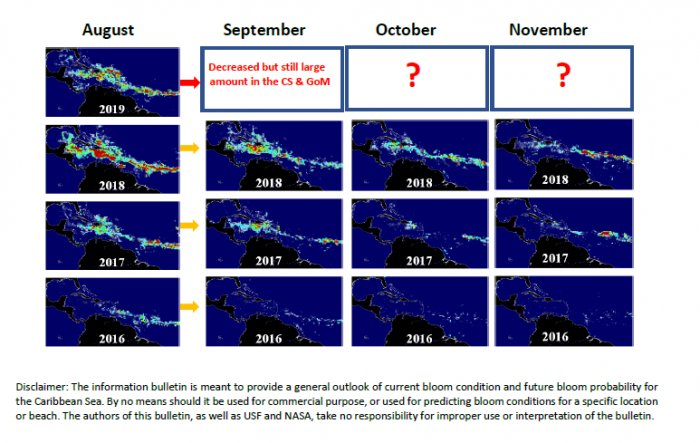The maps below show Sargassum abundance, with warm colors representing high abundance. During August 2019, while there are still large amounts of Sargassum in the Central West Atlantic (CWA) and Caribbean Sea (CS), these amounts are lower than in July 2019. The amounts in the eastern Gulf of Mexico and Florida Straits have also reduced. In all regions combined, the total amount is estimated to be ~7 million metric tons, lower than in August 2018 (~11 million tons) and in August 2015 (~8 million metric tons).
Looking ahead, although reduction in Sargassum amount in the CS is expected to continue, the amount is projected to be relatively higher than most previous years (except 2018 and 2015). This is because 1) there is still a large amount in the CS, and 2) the large amount in the CWA is going to be transported to the CS. Sargassum beaching events in the Caribbean are expected to continue, but at a reduced level. Similarly, although the transport from the Caribbean to the eastern Gulf of Mexico through the Yucatan channel is going to continue, the transported amount is expected to be lower than in August 2019. Overall, beaching events along the Florida’s east coast should be less severe. The exact Sargassum amount, timing, and location of the beaching events are hard to predict as they will depend on local ocean circulations and winds.
For October and later months of 2019, because the amount of Sargassum east of the CWA region has decreased since early August, it is expected that beaching events in the CS and around south Florida will continue to reduce from those of September 2019. More updates will be provided by the end of September 2019. More information and near real-time imagery can be found under the Sargassum Watch System (SaWS, https://optics.marine.usf.edu/projects/saws.html )



